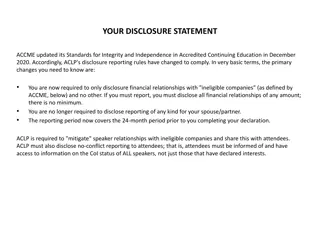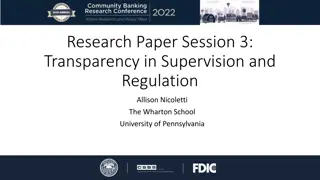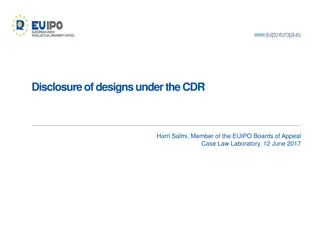Group Disclosure in Data Analysis
Group disclosure occurs when a single cell accounts for a significant percentage of a row or column total in data analysis. This phenomenon can lead to assumptions about the group as a whole based on individual values. Examples from cancer survival rates and workplace injuries illustrate how group disclosure influences data interpretation and decision-making.
Download Presentation

Please find below an Image/Link to download the presentation.
The content on the website is provided AS IS for your information and personal use only. It may not be sold, licensed, or shared on other websites without obtaining consent from the author.If you encounter any issues during the download, it is possible that the publisher has removed the file from their server.
You are allowed to download the files provided on this website for personal or commercial use, subject to the condition that they are used lawfully. All files are the property of their respective owners.
The content on the website is provided AS IS for your information and personal use only. It may not be sold, licensed, or shared on other websites without obtaining consent from the author.
E N D
Presentation Transcript
Group disclosure Group disclosure can occur when one cell accounts for a very high percentage of a row or column total. When a single cell accounts for a very high percentage of a row or column, there is a natural tendency to attribute this characteristic to anyone who may be in this group. For example: A recent survey of drug use in a school found that 95% of pupils had tried illegal drugs within the previous year. What might be the assumptions made if this figure is reported?
Group Disclosure (Example 1) Cancer survival rate by social class example data Social Class 1 Year 2 Years 3 Years 4 Years 5 Years Count How many observations are in each cell? I 92% 83% 75% 69% 62% 8521 II 92% 80% 72% 67% 63% 10143 III non-manual 80% 71% 60% 52% 47% 20875 III manual 68% 64% 59% 50% 42% 25491 IV 55% 42% 37% 33% 28% 12096 V 38% 26% 19% 8% 0% 3661
Group Disclosure (Example 1 - Frequencies) Cancer survival rate by social class example data Social Class 1 Year 2 Years 3 Years 4 Years 5 Years Count Number of observations are clear I 7839 7070 6388 5875 5283 8521 II 9332 8112 7304 6792 6390 10143 Is a 0 a problem in this context? III non-manual 16697 14819 12521 10855 9808 20875 III manual 17330 16318 15036 12740 10709 25491 IV 6652 5078 4476 3989 3383 12096 V 1391 952 692 290 0 3661
Group Disclosure (Example 2) Breakdown of main cause of workplace injuries by profession Profession Tripping/Falls Repetitive Strain Injury Heavy Machinery Other Observations Doctor 8% 22% 0% 70% 732 Builder 24% 19% 3% 54% 1485 Banker 18% 17% 0% 65% 509
Group Disclosure (Example 2 - Frequencies) Breakdown of main cause of workplace injuries by profession Profession Tripping/Falls Repetitive Strain Injury Heavy Machinery Other Observations Doctor 58 164 0 510 732 Builder 355 283 45 802 1485 Banker 92 87 0 330 509 Is a 0 a problem in this context?
Assessments for this module SDAP: Safe Analyst Training - Group Disclosure Created by Cancer Research UK, DKFZ, and The Health Foundation for the Safe Data Access Professionals Working Group























